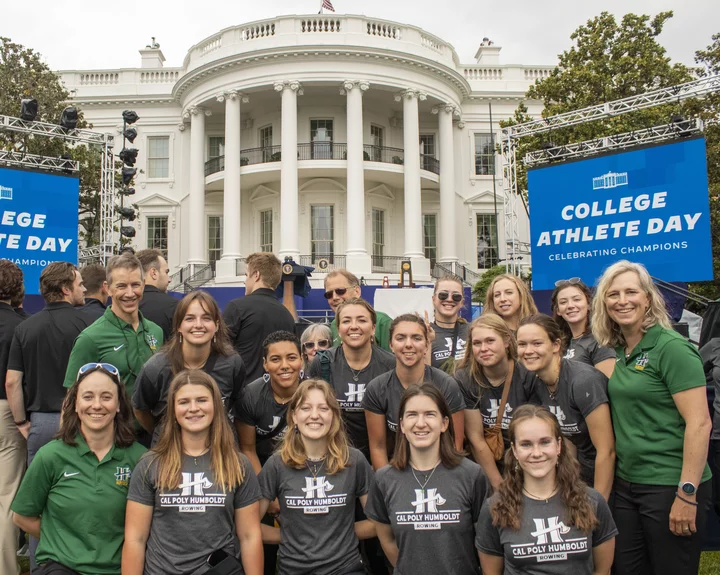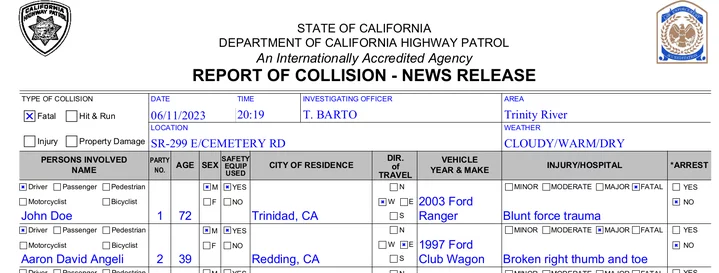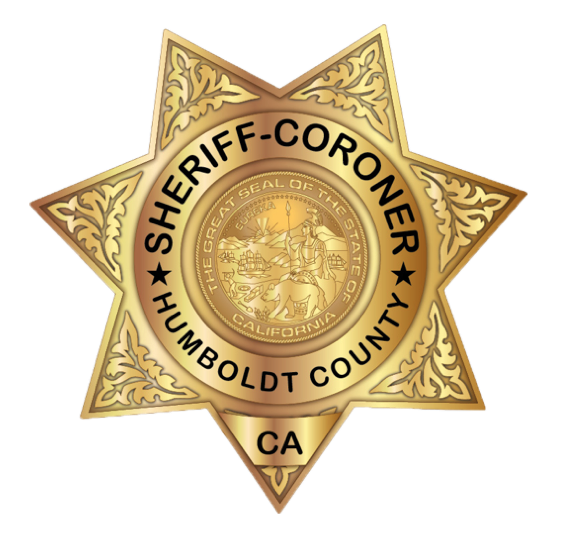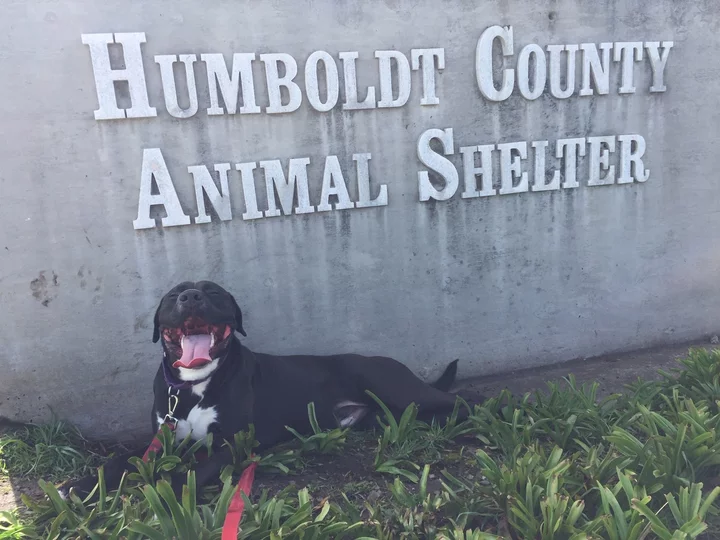Let’s Make a Deal: Legislative Leaders Make California Budget Offer to Newsom
Alexei Koseff / Monday, June 12, 2023 @ 3:22 p.m. / Sacramento
Still yet to strike a budget deal with Gov. Gavin Newsom, legislative Democrats have put their own spending priorities into a bill that they plan to pass this week ahead of a critical deadline.
The proposal, which was published online late Sunday, represents an agreement between the Democratic caucuses of the state Senate and Assembly, both of which hold supermajorities and can pass any measure without Republican support. The Legislature is constitutionally required to approve a balanced budget by Thursday to get paid.
But negotiations are ongoing with Newsom, including over a looming shortfall in public transit funding and the governor’s push to streamline permitting for infrastructure projects, as California faces a budget deficit estimated to be more than $30 billion. They have just weeks remaining to work out a compromise before the start of the fiscal year on July 1.
“You cannot achieve that if you’re not close,” said Sen. Nancy Skinner, a Berkeley Democrat who leads the Senate budget committee. She characterized the remaining differences between the Legislature and the governor as a matter of details.
“The money will be very comparable,” she told CalMatters today.
Assemblymember Phil Ting, a San Francisco Democrat who leads the Assembly budget committee, pointed to permitting overhaul as the biggest unresolved issue. Newsom recently announced a plan to speed up development of major infrastructure projects by limiting environmental challenges, which he is trying to jam through the budget process over the objections of some legislators.
“We’re supportive of the overall direction of the governor’s bills, but we still need time to go through the policy details,” Ting said. “These are significant policy bills which all the different policy committees are reviewing.”
Overall, the Legislature’s $312 billion spending plan aligns with Newsom on avoiding major cuts to ongoing programs and even increasing core funding for some, including schools, public universities, welfare payments and health coverage. It also approves many of the new proposals from the governor’s own budget blueprint, such as $250 million in additional funding for flood protection and another $1 billion to help local governments address widespread homelessness.
How much assistance to provide public transit agencies, which warn that they may go over the “fiscal cliff” without an infusion of cash from the state because of steep ridership declines during the coronavirus pandemic, has been a key subject of disagreement.
Newsom wants to pull back more than $2 billion that was previously promised for local rail infrastructure. Legislative Democrats not only rejected that move, but also proposed an additional $1.1 billion over the next three years from the state’s cap-and-trade funds to help cover operating expenses for transit agencies.
Even that aid is not enough to avoid cutbacks in service, according to the California Transit Association, which represents the industry and pegs its revenue gap at closer to $6 billion.
“We are acknowledging that this isn’t a funding package that will address the full balance of our needs, but we see this as something that will address the most immediate needs,” said Michael Pimentel, executive director of the association. “It gives us the ability to come back in future months and future years and continue the conversation.”
Legislative Democrats’ plan also seeks $1 billion more than the governor for local homelessness initiatives and $1 billion to increase reimbursement rates for providers of subsidized child care, who say they do not make enough money to cover their costs. Newsom is pushing to change those rates through a more comprehensive overhaul.
“The wrinkle this year, relative to other years, is there is a new degree of challenge when you’re trying to close a shortfall,” said H.D. Palmer, spokesperson for the governor’s Department of Finance.
Palmer declined to discuss what specific issues remain unresolved in the negotiations, though he acknowledged that the permitting proposal is a priority for Newsom.
“We hope we’ll be able to resolve those differences sooner than later,” Palmer said.
###
CalMatters’ state Capitol reporter Sameea Kamal contributed to this story. CalMatters.org is a nonprofit, nonpartisan media venture explaining California policies and politics.
BOOKED
Yesterday: 11 felonies, 16 misdemeanors, 0 infractions
JUDGED
Humboldt County Superior Court Calendar: Yesterday
CHP REPORTS
No current incidents
ELSEWHERE
RHBB: Catholic Hospital Denies It Violated CA Law, Attorney General Makes Case For Abortion Protection
RHBB: Prescribed Burn Planned for the Huestis Rock Unit, Ft. Seward Area
RHBB: Green Diamond Prescribed Burning Notification for Today
Cal Poly Humboldt Women’s Rowing Team Honored at the White House During ‘College Athlete Day’
LoCO Staff / Monday, June 12, 2023 @ 1:39 p.m. / Cal Poly Humboldt
The rowing team celebrates its national championship title at the White House | Photo courtesy of Cal Poly Humboldt
###
Press release from Cal Poly Humboldt:
Fresh off their national title victory two weeks ago, the Cal Poly Humboldt Women’s Rowing team celebrated in style with a visit to the White House on Monday, June 12.
For Humboldt rower Dana Foley, who was named Great Northwest Athletic Conference (GNAC) Rower of the Year, today’s visit was a culmination of a magical season that saw her team win its third national title in program history.
“I feel really happy to be here today with this particular team,” Foley said. “To end up here, at the White House, where everything feels very special and gold, I am just really happy to share it with everyone.”
The Lumberjacks, along with national rowing champions from Divisions I and III, attended the event as part of the White House’s College Athlete Day, which seeks to celebrate the NCAA’s national champions across all divisions and sports.
Humboldt’s GNAC Coach of the Year Matt Weise said he couldn’t have asked for a better ending to the season. Weise’s staff, which includes assistant coaches Pat Hyland and Ashley Donnell and volunteer coach Lisa Weise, also earned West Region Staff of the Year from the Collegiate Rowing Coaches Association (CRCA).
“I talked to my wife a week before the championship and I said I wanted my ‘sports movie ending’ to this season, because it’s been so good,” Weise said. “There’s not a much better ‘sports movie ending’ than being at the White House.”
Vice President Kamala Harris, Second Gentleman Doug Emhoff, and President of the NCAA Charlie Baker presided over the ceremony.
“It’s been an amazing experience,” Humboldt athletic director Nick Pettit said. “Celebrating [this team’s] achievements as national champions, being in front of the White House, and seeing their faces is a really special thing, not just for them, but for the whole community.”
Humboldt earned its invitation to the exclusive event after winning the NCAA Division II title on May 27 at Cooper River Park in New Jersey, where the Jacks snagged gold in both the Fours and Eights grand finals. The victory brings the third national title in program history back to the North Coast and is also the first title for head coach Matt Weise since he was named head coach in 2020.
72-Year-Old Trinidad Man Killed in Crash on Highway 299 Yesterday Evening
LoCO Staff / Monday, June 12, 2023 @ 1:32 p.m. / Traffic
PREVIOUSLY:
###
Press release from the California Highway Patrol:
Party #1 (John Doe, 72, of Trinidad) was driving Vehicle #1 (Ford Ranger) westbound on SR-299, east of Cemetery Road, at approximately 55 mph. Party #2 (Aaron Angeli, 39, of Redding) was driving Vehicle #2 (Club Wagon) eastbound on SR-299, east of Cemetery Road, at approximately 55 mph.
For reasons still under investigation, the driver of the Ford Ranger veered over the double yellow lines and entered the eastbound lane directly into the path of the Club Wagon. The vehicles collided head-on in the eastbound lane. Angeli, who suffered major injury, exited his vehicle and extricated the unconscious Party #1 from his vehicle. The Ford Ranger then caught on fire and became fully engulfed seconds after both parties were clear of the vehicle. Party #1 succumbed to his injuries on scene.
This collision is under investigation and it is unknown at this time if alcohol and or drugs were a factor. The identity of Party #1 is withheld pending notification of next of kin.
McGuire-Authored Bill to Create Dedicated Tribal Housing Grant Program Clears Senate
LoCO Staff / Monday, June 12, 2023 @ 12:39 p.m. / Tribes
Image via State of California Business, Consumer Services and Housing Agency.
###
Press release from Senator Mike McGuire’s office:
Sacramento, CA – Senate Majority Leader Mike McGuire’s legislation, SB 18, which would create the first-ever dedicated tribal housing grant program in California, cleared the Senate with bipartisan support last week. The critical legislation addresses the historic and desperate need for tribal housing across the state.
Native American communities continue to face the long-standing impacts of historic genocide and discrimination. The numbers don’t lie:
- Native Americans are disproportionally represented among California’s homeless population.
- Tribal communities see higher rates of poverty and overcrowded and substandard homes compared to any other population in the Golden State.
- One third of tribal residents live below the federal poverty line, and approximately 9% of tribes in California have homes that lack complete plumbing and 7% lack complete kitchens.
This is simply unacceptable.
SB 18 would create a tribal specific housing fund which would fund construction and rehabilitation of homes for rent and sale, specifically for tribal communities. The bill would also provide technical assistance to help tribal governments navigate the complex web of regulations and requirements that often hinder tribal housing projects.
“Tribal communities face a staggering housing crisis which is rooted in historic genocide and racism, underinvestment and lack of eligible funding. To truly fix this public health crisis that exists in so many California tribal communities, the State must move with speed in partnership with tribal leaders to establish an exclusive tribal housing program with dedicated infrastructure funding. That’s why we’re working hand-in-hand with tribal leaders from across the Golden State to move SB 18 forward,” McGuire said.
Despite the clear need, the overwhelming majority of tribes have been unable to access existing state housing program funds. Pre-existing funds are often too restrictive and bureaucratic for tribes to meet the threshold and compliance requirements, and many of the requirements are mismatched compared to the needs that exist on tribal land.
Only 13 out of 109 California tribes have been awarded state funds over the last several years.
SB 18 would address the severe housing shortage that exists on tribal lands by creating a new and separate housing program for tribal governments, specific to tribal needs, and designed in consultation with tribes.
SB 18 is supported by: The Yurok Tribe, Big Pine Paiute Tribe of the Owens Valley, Cher-Ae Heights Indian Community of the Trinidad Rancheria, Dry Creek Rancheria Band of Pomo Indians, Iipay Nation of Santa Ysabel, Karuk Tribe Housing Authority, Manchester Point Arena Band of Pomo Indians, Middletown Rancheria of Pomo Indians, Round Valley Indian Housing Authority, among many others. The bill is co-authored by Senators Bill Dodd and Scott Wiener and Assemblymember Cecilia Aguiar-Curry.
Homicide in Swain’s Flat Friday Night; Sheriff’s Office Declines to Arrest Shooter ‘Based on the Totality of the Evidence’
LoCO Staff / Monday, June 12, 2023 @ 11:33 a.m. / Crime
PREVIOUSLY:
###
Press release from the Humboldt County Sheriff’s Office:
On June 9, 2023, at about 8:50 p.m., Humboldt County Sheriff’s deputies were dispatched to a residence on the 19100 block of Highway 36 near Swains Flat for the report of a homicide.
Deputies arrived at the residence and located a deceased male with what appeared to be gunshot wounds.
The reporting party, a 46-year-old male, told investigators that he had gone to check on his friend, 51-year-old Rico Johnson, who had reportedly been exhibiting erratic behavior that day. Upon arriving at the residence, Johnson reportedly aimed a firearm at the reporting party, threatening to kill him. The reporting party then fatally shot Johnson.
Based upon the totality of circumstances of this incident, Sheriff’s investigators elected to not make an arrest, pending further investigation. A forensic autopsy is in the process of being scheduled.
This case is still under investigation by the Sheriff’s Major Crimes Division and will be forwarded to the District Attorney’s Office upon completion for review and charging decision.
Anyone with information about this case is encouraged to call the Humboldt County Sheriff’s Office at (707) 445-7251 or the Sheriff’s Office Crime Tip line at (707) 268-2539.
Civil Grand Jury Finds ‘Appalling and Dangerous Conditions’ at Humboldt County Animal Shelter
Ryan Burns / Monday, June 12, 2023 @ 11:31 a.m. / Courts
Photo via Humboldt County Animal Shelter page on Facebook.
###
DOCUMENT: Custody and Corrections, and Other Humboldt County Facilities
###
In its fourth report of the 2022-2023 session, the Humboldt County Civil Grand Jury this morning released its findings after inspecting the state-run Eel River Conservation Camp and seven county facilities, including the county jail, Sempervirens Psychiatric Health Facility and the Humboldt County Animal Shelter.
In the latter facility, jurors found “appalling and dangerous conditions,” including rusted and broken lampposts in the parking lot as well as outdated security cameras and overcrowding issues, with some animals housed in cages in the hallways.
But the report also has some good things to say about the place: “The animals are kept in pens that are clean and well supplied with water and warm blankets or cots,” it says. And later: “The staff of the Sheriff’s Animal Shelter are dedicated and work closely with animal rescue organizations in the county to house and adopt animals. They make a considerable effort to reunite lost pets with their owners.”
Elsewhere, the report commends staff for their hard work and dedication, but it notes problems with short-staffing and run-down buildings, with conditions such as “peeling paint, leaking ceilings, water stains on walls, and drafty and broken windows.”
The Civil Grand Jury, as you may recall, is an independent watchdog body of the Humboldt County Superior Court, its 19 members all volunteers from the community.
One of its only mandated tasks each year is to visit and evaluate the physical conditions and management of public prisons, though, of course, Humboldt County doesn’t have any prisons. It does, however, have Eel River Conservation Camp #31, which is operated by the California Department of Corrections and Rehabilitation (CDCR).
As with previous grand juries, this one commended the facility, saying it “maintains a successful rehabilitation program, which provides
prisoners with fire-fighting and other valuable job skills, while assisting with the
reduction of their imposed sentences.”
But the CDCR should build a fence to help deter the passing of contraband from Recology’s Redway Transfer Station, which shares a boundary and driveway with the prison camp.
Regarding short-staffing at county facilities, the Grand Jury says:
The number of unfilled allocated positions causes concern on many levels. Existing staff are overworked due to understaffing, causing some to face mandatory overtime on a regular basis. When there are staff shortages with overworked employees, client services suffer.
Overall, this grand jury was “impressed with the services being provided by the staff given the parameters of tight budgets, understaffing, and the need for physical improvements to the facilities,” the report says, though it also notes, “We know Humboldt County can do better.”
The report lists 14 recommendations for improving the inspected facilities, mostly to do with maintenance and physical improvements. Responses to the report are required from the Humboldt County Board of Supervisors and the Sheriff, and responses are requested from several other county departments as well as the California Department of Transportation.
Click the link at the top of this post to read the full report.
###
Previous 2022-23 Grand Jury reports:
- ‘IT’S OK TO VOTE’: Grand Jury Issues Its First Report of This Cycle, Focused on Humboldt County Election Integrity
- In its Second Report of the Year, the Humboldt County Civil Grand Jury Tackles the ‘Dysfunctional’ State of Child Welfare Services in the County and the ‘Toxic’ Work Atmosphere Within the Department
- CITY of MCKINLEYVILLE? It’s Time for Real Talk About Incorporation, Grand Jury Sez
OBITUARY: Edward Leroy Nevills, 1938-2023
LoCO Staff / Monday, June 12, 2023 @ 7:05 a.m. / Obits
Ed
was born February 16, 1938 in Eureka to Ralph and Gertrude (Smith)
Nevills. He passed on May 1, 2023 in Fortuna after a short battle
with cancer.
Ed married Frances “Fran” Brady June 12, 1959. They had two children, Sonja and David.
Ed worked for AT&T until his retirement then he and Fran became snowbirds spending many winters in Arizona.
In his later years, he found love again with Pat Overholt. Ed took Pat on her first camping trips and Pat taught Ed to love sports — schooling him on the rules, the players and her favorite coaches.
Ed was preceded in death by his parents, Fran and his daughter Sonja.
He is survived by his loving Pat, son Dave and wife Dayna, two granddaughters (Amanda and Katie), great-grands Amelia, Scarlett, Addy, Lexy, Zarina and Sophia, his sisters and their husbands Margaret and Perry Huff and Judy and Peter Cookson, and Pat’s family.
A celebration of life will be held June 25 from 1 to 3 p.m. at the Veterans Memorial Building in Fortuna. Lunch will be served.
###
The obituary above was submitted on behalf of Ed Nevills’ loved ones. The Lost Coast Outpost runs obituaries of Humboldt County residents at no charge. See guidelines here. Email news@lostcoastoutpost.com.






